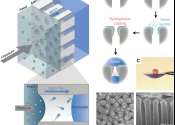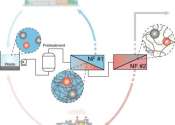Researchers develop ultrahigh-water-flux membranes for seawater desalination
The supply–demand imbalance of clean water has resulted in a global sustainability crisis. The United Nations World Water Developments Report 2023 reveals that 2–3 billion people are suffering from a shortage of water.
Sep 5, 2023
0
29









